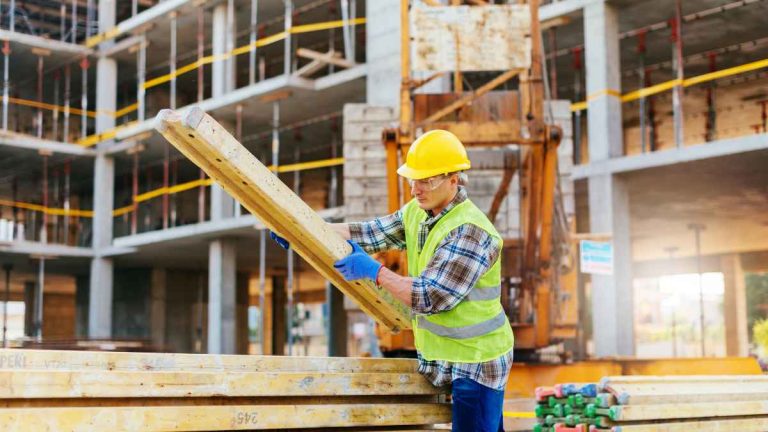Sustainable construction in Ireland has emerged as a critical focus as the nation works to meet ambitious climate targets while addressing the ongoing housing crisis and fostering economic growth. With the construction industry being a significant contributor to carbon emissions globally, Ireland’s path towards a low-carbon, resource-efficient economy hinges on its ability to implement sustainable practices effectively.
The Irish Government has set a clear ambition to achieve net-zero carbon emissions by 2050, with an interim goal of reducing emissions by 51% by 2030. Notably, the construction and built environment sector is responsible for about 40% of Ireland’s total carbon emissions, factoring in both operational and embodied carbon. To combat this issue, the government has introduced policies and standards that aim to weave sustainability into the fabric of the construction process.
One prominent initiative is the Climate Action Plan, which promotes the use of sustainable materials, energy-efficient building designs, and the integration of renewable energy sources. Since its introduction in 2021, the Nearly Zero Energy Building (NZEB) standard mandates that all new buildings achieve high energy performance, sourcing nearly all of their energy from renewable options. Additionally, the adoption of Building Information Modelling (BIM) is revolutionising construction practices, allowing for improved resource management and minimised waste.
Alongside these regulatory measures, voluntary certifications such as Leadership in Energy and Environmental Design (LEED) and Building Research Establishment Environmental Assessment Method (BREEAM) are gaining popularity among developers eager to showcase their commitment to environmental stewardship.
Challenges Faced By Ireland During The Transition
However, the transition towards sustainable construction in Ireland faces several challenges:
High Embodied Carbon in Materials:
The industry’s reliance on materials like concrete and steel, which are produced through energy-intensive processes, leads to significant embodied carbon. While alternatives such as timber and recycled materials are available, their adoption is often limited by supply chain issues and regulatory barriers.
Retrofitting Existing Buildings:
Ireland’s housing stock comprises over 2 million homes, many of which are not energy efficient. Retrofitting these properties is essential for meeting sustainability targets, yet the high costs and complexities involved in scaling retrofitting efforts pose considerable challenges.
Skilled Workforce Shortages:
The demand for skilled professionals in green construction is outpacing the current supply. Expertise in sustainable building techniques, energy-efficient design, and renewable energy systems is essential to fulfil the rising demand.
Affordability Amid Housing Crisis:
Sustainable construction often incurs higher initial costs, complicating efforts to address Ireland’s housing shortage. Balancing the need for affordable housing with environmental sustainability remains a significant challenge.
Opportunities To Promote Sustainable Construction
Despite these hurdles, Ireland possesses numerous opportunities to promote sustainable construction:
Innovative Building Materials:
Research into low-carbon materials like cross-laminated timber (CLT) and hempcrete is gaining traction. Government support for local production of these materials can help reduce embodied carbon while bolstering the economy.
Green Infrastructure and Urban Planning:
Investment in green infrastructure—such as rain gardens, permeable pavements, and green roofs—can mitigate environmental impacts and enhance urban resilience, leading to more sustainable communities.
Digital Technologies:
The integration of digital tools like BIM and the Internet of Things (IoT) can optimise resource usage, monitor energy consumption, and reduce waste throughout the construction lifecycle. Expanding training programs to enhance workforce skills in these technologies can accelerate their uptake.
Circular Economy in Construction:
Promoting a circular economy, where materials are reused and recycled, can significantly diminish waste. Ireland is beginning to witness deconstruction projects that repurpose materials from demolished buildings, but scaling these initiatives requires robust policies and incentives.
Policy and Incentives:
Strengthening policy frameworks, including tax incentives for sustainable initiatives and penalties for high-carbon practices, can encourage sustainable behaviour across the industry.
Ireland has already seen successful examples of sustainable construction. The University College Dublin Future Campus features green roofs and solar panels, while the Cloughjordan Ecovillage in County Tipperary exemplifies community-led renewable energy integration.
Conclusion
In conclusion, sustainable construction presents both challenges and opportunities for Ireland as it seeks to harmonise environmental, social, and economic priorities. By addressing obstacles such as embodied carbon, retrofitting, and workforce shortages, while embracing innovations in materials and technology, Ireland can emerge as a leader in green construction.
Achieving sustainability in construction is crucial not only for meeting climate targets but also for improving quality of life and creating resilient economic opportunities. Through collaborative efforts among the government, industry, and communities, Ireland can pave the way for a sustainable future that aligns the built environment with natural ecosystems.


